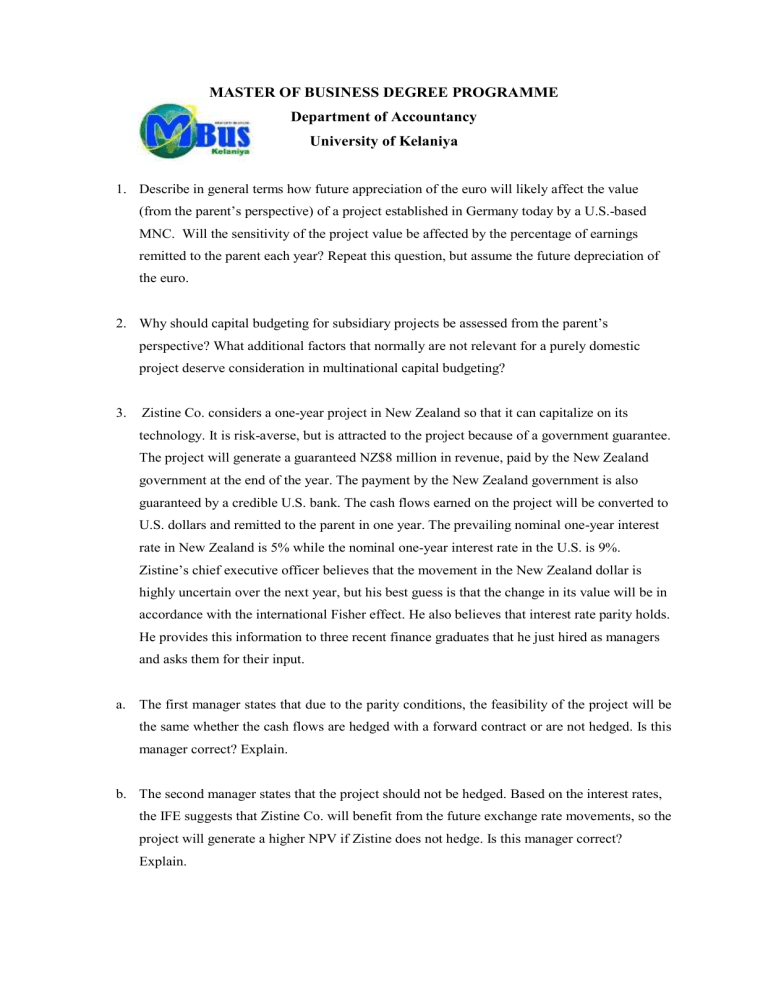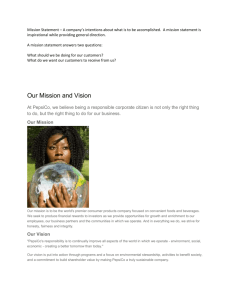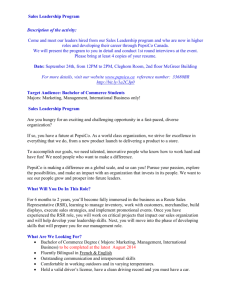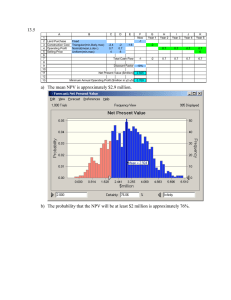Multinational Finance Exam: Exchange Rates, Capital Budgeting
advertisement

MASTER OF BUSINESS DEGREE PROGRAMME Department of Accountancy University of Kelaniya 1. Describe in general terms how future appreciation of the euro will likely affect the value (from the parent’s perspective) of a project established in Germany today by a U.S.-based MNC. Will the sensitivity of the project value be affected by the percentage of earnings remitted to the parent each year? Repeat this question, but assume the future depreciation of the euro. 2. Why should capital budgeting for subsidiary projects be assessed from the parent’s perspective? What additional factors that normally are not relevant for a purely domestic project deserve consideration in multinational capital budgeting? 3. Zistine Co. considers a one-year project in New Zealand so that it can capitalize on its technology. It is risk-averse, but is attracted to the project because of a government guarantee. The project will generate a guaranteed NZ$8 million in revenue, paid by the New Zealand government at the end of the year. The payment by the New Zealand government is also guaranteed by a credible U.S. bank. The cash flows earned on the project will be converted to U.S. dollars and remitted to the parent in one year. The prevailing nominal one-year interest rate in New Zealand is 5% while the nominal one-year interest rate in the U.S. is 9%. Zistine’s chief executive officer believes that the movement in the New Zealand dollar is highly uncertain over the next year, but his best guess is that the change in its value will be in accordance with the international Fisher effect. He also believes that interest rate parity holds. He provides this information to three recent finance graduates that he just hired as managers and asks them for their input. a. The first manager states that due to the parity conditions, the feasibility of the project will be the same whether the cash flows are hedged with a forward contract or are not hedged. Is this manager correct? Explain. b. The second manager states that the project should not be hedged. Based on the interest rates, the IFE suggests that Zistine Co. will benefit from the future exchange rate movements, so the project will generate a higher NPV if Zistine does not hedge. Is this manager correct? Explain. c. The third manager states that the project should be hedged because the forward rate contains a premium, and therefore the forward rate will generate more U.S. dollar cash flows than the expected amount of dollar cash flows if the firm remains unhedged. Is this manager correct? Explain. 4. Blustream Inc. considers a project in which it will sell the use of its technology to firms in Mexico. It already has received orders from Mexican firms that will generate MXP3,000,000 in revenue at the end of the next year. However, it might also receive a contract to provide this technology to the Mexican government. In this case, it will generate a total of MXP5,000,000 at the end of the next year. It will not know whether it will receive the government order until the end of the year. Today’s spot rate of the peso is $.14. The one-year forward rate is $.12. Blustream expects that the spot rate of the peso will be $.13 one year from now. The only initial outlay will be $300,000 to cover development expenses (regardless of whether the Mexican government purchases the technology). It will pursue the project only if it can satisfy its required rate of return of 18 percent. Ignore possible tax effects. It decides to hedge the maximum amount of revenue that it will receive from the project. a. Determine the NPV if Blustream receives the government contract. b. If Blustream does not receive the contract, it will have hedged more than it needed to and will offset the excess forward sales by purchasing pesos in the spot market at the time the forward sale is executed. Determine the NPV of the project assuming that Blustream does not receive the government contract. c. Now consider an alternative strategy in which Blustream only hedges the minimum peso revenue that it will receive. In this case, any revenue due to the government contract would not be hedged. Determine the NPV based on this alternative strategy and assume that Blustream receives the government contract. d. If Blustream uses the alternative strategy of only hedging the minimum peso revenue that it will receive, determine the NPV assuming that it does not receive the government contract. e. If there is a 50 percent chance that Blustream will receive the government contract, would you advise Blustream to hedge the maximum amount or the minimum amount of revenue that it may receive? Explain. f. Blustream recognizes that it is exposed to exchange rate risk whether it hedges the minimum amount or the maximum amount of revenue it will receive. It considers a new strategy of hedging the minimum amount it will receive with a forward contract and hedging the additional revenue it might receive with a put option on Mexican pesos. The one-year put option has an exercise price of $.125 and a premium of $.01. Determine the NPV if Blustream uses this strategy and receives the government contract. Also, determine the NPV if Blustream uses this strategy and does not receive the government contract. Given that there is a 50 percent probability that Blustream will receive the government contract, would you use this new strategy or the strategy that you selected in question (e)? 5. PepsiCo recently decided to invest more than $300 million for expansion in Brazil. Brazil offers considerable potential because it has 150 million people and their demand for soft drinks is increasing. However, the soft drink consumption is still only about one-fifth of the soft drink consumption in the U.S. PepsiCo's initial outlay was used to purchase three production plants and a distribution network of almost 1,000 trucks to distribute its products to retail stores in Brazil. The expansion in Brazil was expected to make PepsiCo's products more accessible to Brazilian consumers. a. Given that PepsiCo's investment in Brazil was entirely in dollars, describe its exposure to exchange rate risk resulting from the project. Explain how the size of the parent’s initial investment and the exchange rate risk would have been affected if PepsiCo had financed much of the investment with loans from banks in Brazil. b. Describe the factors that PepsiCo likely considered when estimating the future cash flows of the project in Brazil. c. What factors did PepsiCo likely consider in deriving its required rate of return on the project in Brazil? d. Describe the uncertainty that surrounds the estimate of future cash flows from the perspective of the U.S. parent. e. PepsiCo’s parent was responsible for assessing the expansion in Brazil. Yet, PepsiCo already had some existing operations in Brazil. When capital budgeting analysis was used to determine the feasibility of this project, should the project have been assessed from a Brazil perspective or a U.S. perspective? Explain.




